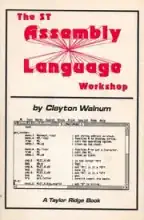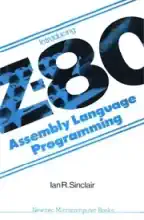Assembly Programming
2024-09-18 20:22:24
Retrobug.org Verified
share
save
Assembly Programming
The list below contains a list of books selected by RetroBug, covering programming in Assembly Language.
In computer programming, assembly language (or assembler language, or symbolic machine code), is any low-level programming language in which there is a very strong correspondence between the instructions in the language and the architecture's machine code instructions. Assembly language usually has one statement per machine instruction (1:1), but constants, comments, assembler directives, symbolic labels of, e.g., memory locations, registers, and macros are generally also supported.
Assembly code is converted into executable machine code by a utility program referred to as an assembler. The term "assembler" is generally attributed to Wilkes, Wheeler and Gill in their 1951 book The Preparation of Programs for an Electronic Digital Computer, who, however, used the term to mean "a program that assembles another program consisting of several sections into a single program". The conversion process is referred to as assembly, as in assembling the source code. The computational step when an assembler is processing a program is called assembly time.
Because assembly depends on the machine code instructions, each assembly language is specific to a particular computer architecture.
In computer programming, assembly language (or assembler language, or symbolic machine code), is any low-level programming language in which there is a very strong correspondence between the instructions in the language and the architecture's machine code instructions. Assembly language usually has one statement per machine instruction (1:1), but constants, comments, assembler directives, symbolic labels of, e.g., memory locations, registers, and macros are generally also supported.
Assembly code is converted into executable machine code by a utility program referred to as an assembler. The term "assembler" is generally attributed to Wilkes, Wheeler and Gill in their 1951 book The Preparation of Programs for an Electronic Digital Computer, who, however, used the term to mean "a program that assembles another program consisting of several sections into a single program". The conversion process is referred to as assembly, as in assembling the source code. The computational step when an assembler is processing a program is called assembly time.
Because assembly depends on the machine code instructions, each assembly language is specific to a particular computer architecture.
462
Assembly Lines: The Complete Bookby Roger Wagner
Language: English
Published by The Softalk Apple Project
ISBN: 1312089402
466
Assembly language programming for the Atari Computersby Mark Chasin
Language: English
Published by BYTE
ISBN: 0070106797
851
Learning ti994a home computer assembly language programmingby McComic, Ira
Language: English
Published by Wordware Publishing, Inc.
ISBN: 0915381567
923
Beginners assembly language programming for the VIC 20by Holmes, Peter
Language: English
ISBN: 0907792103
1078
Assembly language for kids: Commodore 64by Sanders, William B
Language: English
ISBN: 0931145007
1143
Spiele Programmierung in Assemblerby Schimanski, Jorgo
Language: German
Published by Heim Verlag
ISBN: 3928480022
1183
Amiga Assembler Von Null Auf Hundertby Webers, Ronald; Zavelberg, Frank
Language: German
Published by Verlag Gabriele Lechner
ISBN: 3926858400
1223
Amiga Assembler Buchby Wollschlaeger, Peter
Language: German
Published by Markt & Technik
ISBN: 3890905250
1737
Introduction to assembly language for the TI home computerby Molesworth, Ralph
Language: English
ISBN: 0911061010
1739
Compute!'s beginner's guide to assembly language on the TI 99/4Aby Lottrup, Peter M. L
Language: English
ISBN: 0942386744
2216
SAS/C Development System User's Guide, Volume 2: Debugger, Utilities, Assembler, Version 6Language: English
ISBN: 1-55544-583-7
5370
Introducing Z 80 Assembly Language Programming (Ian SINCLAIR)by Ian Sinclair
Language: English
ISBN: 0408013389


































